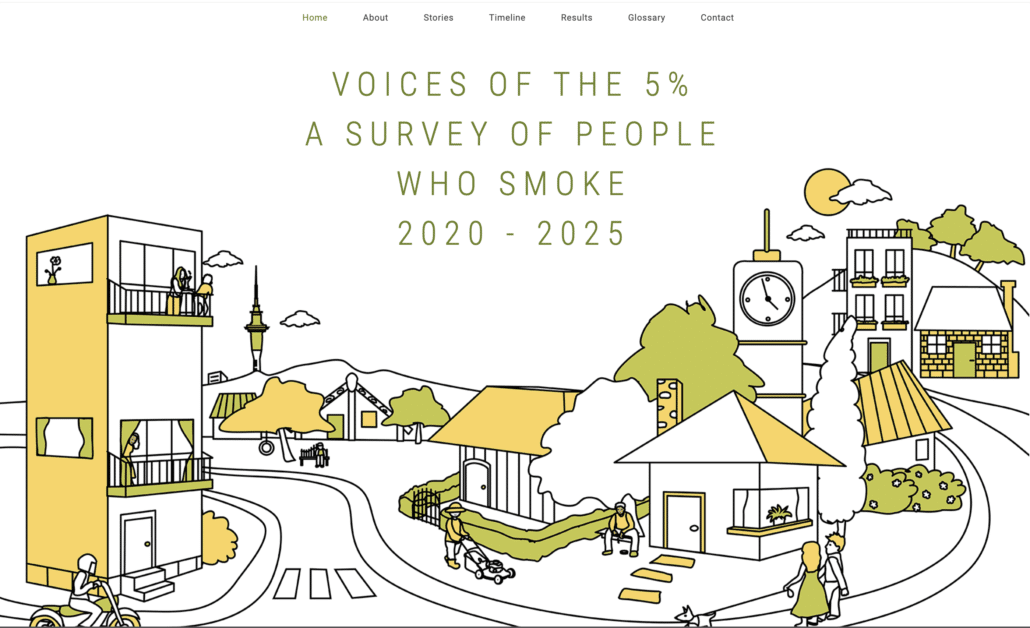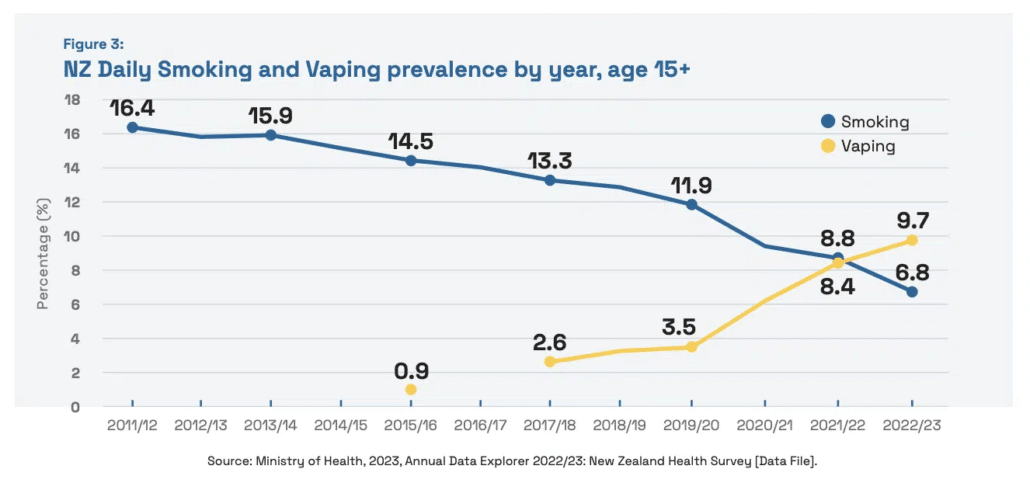Like Sweden, New Zealand has reduced its daily smoking rate to just over 5%, the threshold at which the World Health Organization (WHO) declares a country “smoke-free.” This achievement has been realized through the acceptance and widespread use of smoke-free nicotine products.
Following Sweden’s success, New Zealand has reduced its daily smoking rate to just over 5%, the threshold the WHO uses to declare a country “smoke-free.”
New Zealand’s smoking rate has halved in just five years thanks to the acceptance and widespread use of smoke-free nicotine products. This is stated in a new report from Smoke-Free Sweden, prepared by a group of international experts led by Dr. Marewa Glover, a prominent New Zealand public health scientist and director of the Centre of Research Excellence: Indigenous Sovereignty & Smoking.

Rapid Results: How to Achieve Them?
“Unlike Sweden, which will become the first country in the world to be officially declared ‘smoke-free’ this year, New Zealand’s rapid reduction in smoking rates is a recent phenomenon. Since 2018, smoking rates have halved, a change that reflects the increase in vaping,” explains Dr. Glover.
She explains that the rise in vaporizer use accelerated when they were legalized and formally endorsed by the government as a tool for adults to quit smoking.

Despite the differences in implementation time, the principle behind the success of both countries is the same: making smoke-free nicotine alternatives, such as vaporizers, snus, and nicotine pouches, accessible, acceptable, and affordable for adult smokers has led a large number of people to quit smoking. In 2018, the daily smoking rate in New Zealand was 13.3%. By 2023, it had fallen to 6.8%.

A Fight Against Inequality
According to Dr. Glover, in New Zealand, the highest smoking rate is found among low-income individuals and the Māori people. However, the Māori have experienced the greatest declines in recent years, demonstrating the power of vaporizers to reverse health inequalities and provide a path to quitting smoking.
Most surprisingly, New Zealand now has a lower smoking rate than Australia after decades of lagging behind. In Australia, a neighboring country struggling with an increasing illegal market, vapes are only available with a medical prescription.
The report’s authors note that the findings have significant implications for policymakers, particularly the World Health Organization, which has failed to recognize the value of tobacco harm reduction despite a growing body of evidence showing that smoke-free alternatives are the most effective smoking cessation tools available on the market.

Suely Castro, founder of Quit Like Sweden and harm reduction advocate, leads a new initiative to encourage nations to quit smoking like Sweden has. Castro commented that the dramatic drop in smoking rates in New Zealand in just a few years shows that it is possible and that many more countries could see huge public health benefits with this approach.
Dr. Glover explains that New Zealand’s experience shows that with access to safer alternatives, people can quit smoking en masse. “Like in Sweden, this success has been driven by a combination of government initiatives and community support, rather than ideological wars against nicotine.”
Read the Report here.

